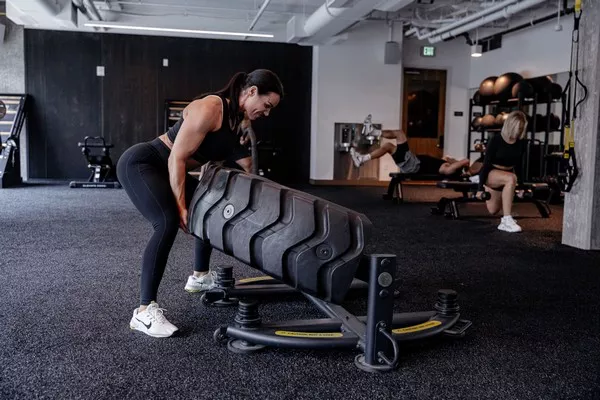Cardiovascular exercise, or cardio for short, is an important part of any fitness routine. It can help to improve heart health, boost endurance, and burn calories. However, many people worry that doing too much cardio can lead to muscle loss. In this article, we will explore how to not burn muscle when doing cardio and provide tips for maintaining muscle mass while still getting the benefits of cardiovascular exercise.
Why Do People Worry About Burning Muscle During Cardio?
When people talk about burning muscle during cardio, they are usually referring to a process called catabolism. Catabolism is the breakdown of muscle tissue for energy, which can occur when the body is in a state of caloric deficit.
During cardio, the body burns calories for energy. If a person is not consuming enough calories to meet their energy needs, the body may start to break down muscle tissue for fuel. This can lead to muscle loss and a decrease in overall strength and fitness.
However, it is important to note that catabolism is not necessarily a bad thing. In fact, some degree of muscle breakdown is necessary for muscle growth and repair. The goal is to find a balance between catabolism and anabolism, which is the process of building muscle tissue.
Not Burn Muscle When Doing Cardio
There are several strategies that can help to prevent muscle loss during cardio. Some of the most effective strategies include:
Consume enough calories: One of the most important things you can do to prevent muscle loss during cardio is to consume enough calories to meet your energy needs. This means eating a balanced diet that includes plenty of protein, carbohydrates, and healthy fats.
Protein is particularly important for maintaining muscle mass, as it provides the building blocks necessary for muscle growth and repair. Aim to consume at least 0.8 grams of protein per kilogram of body weight per day, and consider increasing your intake if you are doing a lot of cardio.
Do resistance training: Resistance training, such as weightlifting, is an effective way to build and maintain muscle mass. In fact, research has shown that combining resistance training with cardio can help to prevent muscle loss and even promote muscle gain.
Try to incorporate resistance training into your fitness routine at least two to three times per week. Focus on compound exercises that work multiple muscle groups, such as squats, deadlifts, and bench presses.
Limit cardio sessions: While cardio is an important part of any fitness routine, doing too much cardio can increase the risk of muscle loss. Try to limit your cardio sessions to no more than 60 minutes per day, and consider taking rest days or doing low-intensity cardio on some days to give your muscles a break.
Use high-intensity interval training (HIIT): HIIT is a type of cardio that involves short bursts of high-intensity exercise followed by periods of rest. Research has shown that HIIT can be more effective for fat loss and muscle preservation than steady-state cardio.
Try incorporating HIIT into your cardio routine one to two times per week. Choose exercises that work multiple muscle groups, such as burpees, mountain climbers, and jump squats.
Fuel your body before and after workouts: Eating a balanced meal or snack before and after your workouts can help to prevent muscle loss and promote muscle growth. Aim to eat a meal or snack that contains a combination of protein and carbohydrates within 30 minutes of finishing your workout.
Some good pre-workout snacks include a banana with peanut butter, Greek yogurt with berries, or a protein shake. Good post-workout meals include grilled chicken with sweet potato and vegetables, a turkey and avocado sandwich, or a quinoa and vegetable stir-fry.
Gradually increase cardio intensity: If you are new to cardio or have been doing low-intensity cardio for a while, it is important to gradually increase the intensity of your workouts. This will help to prevent muscle loss and reduce the risk of injury.
Start by doing low-intensity cardio for 20-30 minutes per day, and gradually increase the intensity and duration of your workouts over time. Aim to increase the intensity of your cardio workouts by no more than 10% per week to avoid overtraining.
Get enough rest and recovery: Rest and recovery are essential for preventing muscle loss during cardio. Make sure to get enough sleep each night, and consider taking rest days or doing low-intensity cardio on some days to give your muscles a break.
In addition, consider incorporating other forms of recovery into your routine, such as foam rolling, stretching, or massage.
Monitor your progress: Finally, it is important to monitor your progress and adjust your routine as needed. Keep track of your workouts and take note of how you feel after each session.
If you notice any signs of muscle loss, such as decreased strength or muscle soreness, consider adjusting your routine to include more resistance training or less cardio.
Conclusion
In conclusion, cardio is an important part of any fitness routine, but it can increase the risk of muscle loss if not done properly. To prevent muscle loss during cardio, it is important to consume enough calories, do resistance training, limit cardio sessions, use HIIT, fuel your body before and after workouts, gradually increase cardio intensity, get enough rest and recovery, and monitor your progress.
By following these strategies, you can get the benefits of cardiovascular exercise without sacrificing your hard-earned muscle mass. Remember to listen to your body and adjust your routine as needed to find the right balance between cardio and resistance training.
[inline_related_posts title=”You Might Be Interested In” title_align=”left” style=”list” number=”6″ align=”none” ids=”5209,5178,5143″ by=”categories” orderby=”rand” order=”DESC” hide_thumb=”no” thumb_right=”no” views=”no” date=”yes” grid_columns=”2″ post_type=”” tax=””]
































